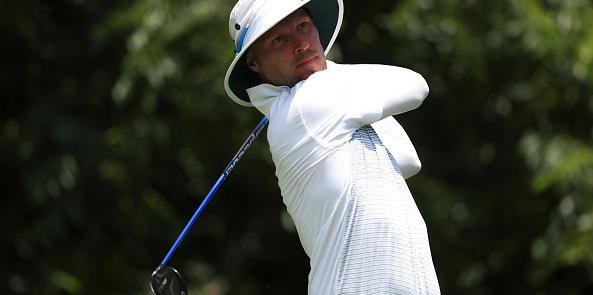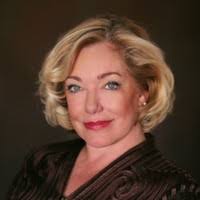IMPROVE MY GAME
Articles
Skin In The Game: The Overlooked Risk Of Golf
Sun May 29, 2016 by Mindy Clark MD

In golf the expression having “skin in the game” is commonly used. What exactly is meant by “skin” means far more than its common usage. In a greater sense, the skin is a synecdoche for the self. You. Your skin. Your health.
Unfortunately, for too many avid golfers, skin health has not received the same attention as their scores or swing.
A number of PGA and LPGA tour professionals have been treated for skin cancer, from Jimmy Walker to Adam Scott. Statistically speaking, this should come as no surprise, given the well-established relationship between the contribution sun exposure makes to the development of all three types of skin cancer.
On average it has been estimated that professional golfers received 217 times the amount of ultraviolet (UV) radiation needed to cause a sunburn over the course of the year. They are not alone at being high risk, because in the same study the recreational golfer for every hour on the course or driving range received 3.5 to 5.4 times the amount of UV radiation required to develop a sunburn.
When we think about “hazards” on the golf course, there are a few that spring to mind: sand traps, water, woods, and others. While the “hazards” can be detrimental to your ultimate score, some are hazards in terms of your sun exposure and potential risk for developing skin cancer. Water and sand, for example, will reflect the UV radiation striking their surface, directing it back at you giving you a second dose of UV radiation. Finally, do not be lulled into a false sense of protection when playing on a cool, cloudy day. Eighty-percent (80%) of UV radiation is still making its way to you on the course.
Also, seventy-eight percent (78%) of golfers share another risk factor for Melanoma: males (I think we should revise these sentences in red as they are a little close to what is written on skincancer.org). The incidence of Melanoma begins to rise in males at the age of forty (40), higher than the risk for females, and continues to rise each decade thereafter.
Thanks to growing awareness of the risks of exposure, pros and amateurs are learning to adapt.
“There’s a saying in Australia: slip, slop, slap,” Adam Scott told the PGA TOUR. “Slip on a t-shirt, slop on some sunscreen and slap on a hat. It’s just part of the job."
The three types of skin cancer are Basal cell carcinoma (BCC), Squamous cell carcinoma (SCC) and the most deadly form of all, Melanoma. There is also a precancerous growth called an Actinic Keratosis (AK) that if left untreated will evolve into a SCC.
It is important to be able to identify AKs, BCCs, SCCs and Melanomas as early as possible in order to seek treatment and maximize the likelihood of a healthy outcome and minimize disfigurement or death by avoiding their early warning signs. (This too, has been widely reported and I am sourcing what follows from both skincancer.org and the American Academy of Dermatology @AAD.org.)
An AK presents itself on the skin in areas that have received years of sun exposure (head, neck, hands and forearms). AKs typically appear on fair-skinned people after the age of 40, developing after years of sun exposure. You often can feel them before you really notice them. You may find you have a dry patch of slightly reddened/dry skin that no matter what you do to make it go away, it does not. Remember, an inflammation from something or an irritation from something should respond to topical OTC treatments; skin cancer does not. It progresses. You then might feel as though there is a tiny grain, almost like a single grain of sand when you touch the area and there may be minor pain when you rub that spot. If you find this occurring you want to see a dermatologist as soon as possible, because chances are you have an AK and it can be treated (depending on the number of areas detected or their sizes) with topical prescription medicine or liquid nitrogen) and prevent it from progressing to a SCC.
BCC is the most common form of skin cancer. They, too, appear often in fair-skinned people but also in those with darker skin. You will notice them appearing in their early stage as a little pearlescent or almost translucent bump on your skin, commonly on the head neck and arms, but they can form anywhere on the body. I have found in my golfing population and interestingly in the farming population, a predilection for the ears, so be vigilant about including them in your routine inspection of your skin. In my mind’s eye I see BCCs as tiny icebergs, because although they do not metastasize, they invade deep within the tissue and can grow into nerves and bones, leading to damage and disfigurement. At some point as it develops you may see a little “dimple” forming at the top and the appearance of tiny blood vessels. Again, you may think it like a pimple, perhaps, but this does not go away. It remains and slowly continues to grow beneath the surface. If you see something like this, see a dermatologist as soon as possible.
SCC is the second most common form of skin cancer. As with BCCs, they tend to develop in fair-skinned people but also in those with darker skin. A SCC may appear as a scaly patch of skin, a firm red bump or a sore that seems to be healing but then re-opens. SCCs form on areas of the skin that have accumulated a great deal of sun exposure, such as the rim of the ear, the face, neck, arms, chest and back. Another area that is at risk is your scalp, depending on what kind of protection you afford it, and yes, the amount of hair residing there. Unfortunately, SCCs can metastasize so early diagnosis and treatment is critical.
Finally, there is Melanoma, as noted the truly bad actor and the deadliest form of skin cancer. Melanoma often develops in a mole or can suddenly appear as a new dark spot on your skin. EARLY DIAGNOSIS AND TREATMENT are crucial. From the AAD.org, here are the ABCDE warning signs of Melanoma to help you identify an early melanoma:
A = Asymmetry One half is unlike the other half.
B = Border An irregular, scalloped or poorly defined border.
C = Color Is varied from one area to another; has shades of tan, brown or black, or is sometimes white, red, or blue.
D = Diameter Melanomas are usually greater than 6mm (the size of a pencil eraser) when diagnosed, but they can be smaller.
E = Evolving A mole or skin lesion that looks different from the rest or is changing in size, shape or color.
If you notice a spot that is changing or is different from the others, or begins to exhibit symptoms such as itching or bleeding, make an urgent appointment to see a dermatologist.
In closing, I want to talk about the common sense daily habits one can develop (and continue for those of you who already do these things) to minimize your risk of developing skin cancer. The following tips are sourced from both the AAD.org and WebMD.
- It is highly recommended that you have a full skin screen performed annually by a dermatologist. The earlier any form of skin cancer is detected, the less invasive the treatment and the better chances of a good outcome.
- Wear sunscreen every day year-round. It is generally recommended that it be a “broad-spectrum” sunscreen, meaning that it protects against both UVA and UVB rays. Apply fifteen (15) minutes before going outside. For golfers in general, reapply at the turn, but for longer playing rounds, ideally every eighty (80) minutes, more often if you are sweating. I recommend that players have an aerosol or pump sunscreen to keep in their cooler on the cart so they can reapply more frequently without causing their hands to be affected by the application.
- Wear sunglasses with total UV protection.
- Wear wide-brimmed hats, and preferably long-sleeved shirts and pants.
- The sun is most intense between 10:00 AM and 2:00 PM so try to avoid being out during those hours as much as possible.
- Watch your skin regularly as you may be first to notice any changes that are occurring.
- I am often asked if I have a preference in a sunscreen, particularly for golfers and other outdoor athletes. I do, as it is purely a physical sunscreen versus a combination of physical and chemical components. If anyone desires to e-mail me, I’d be happy to share with you where you can obtain it online and I have no vested interest in the company.
By all means, first and foremost, continue to love the game of golf and encourage others to engage. Following healthy sun habits will keep you and your skin in the game longer, something we all desire. Now, just tee up your ball and enjoy the round!

Dr. Mindy Clark is a physician and entrepreneur with over thirty years experience in executive health care administration. In 2007, Dr. Clark decided to combine her passion for medicine, golf, and physical fitness by expanding her knowledge of Pilates as well as golf swing mechanics, completing TPI Certifications in Level 3 Medical Professional, Level 3 Fitness Professional, Level 3 Junior Professional, Level 3 Golf Professional, and Level 2 Golf Biomechanics.